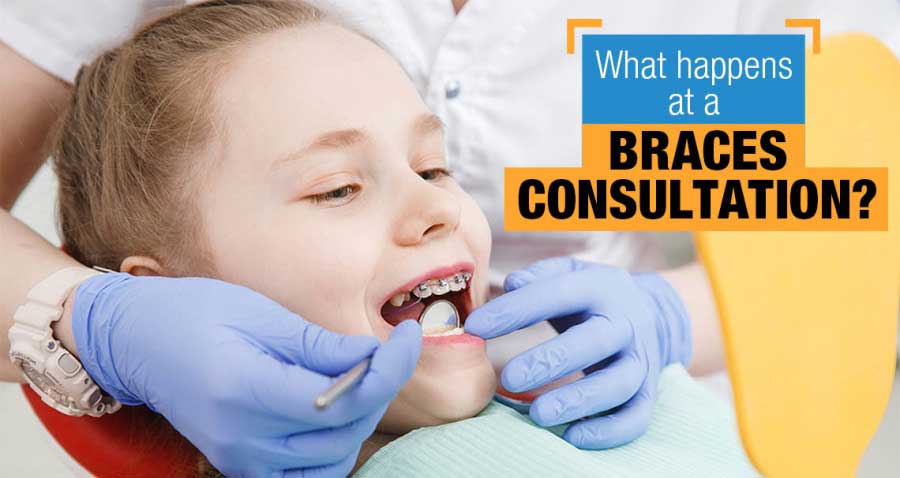Comprehensive Overview to Orthodontics Treatments for Remedying Dental Misalignments
Understanding the intricacies of each treatment, including their devices, benefits, and prospective downsides, is vital in making informed decisions concerning one's orthodontic therapy. As we navigate with the comprehensive guide to orthodontic treatments for dealing with dental misalignments, the complex details of each approach will unravel, losing light on the course toward a useful and harmonious dental positioning.
Orthodontic Procedures Review

Routine changes and monitoring are essential parts of orthodontic treatment to make sure progression is on track and to make any kind of necessary alterations along the method. By going through orthodontic treatments, people can not just accomplish a straighter smile yet also enhance their total dental health and feature.
Standard Dental Braces: Just How They Function
When considering orthodontic therapies for dental misalignments, traditional dental braces stand apart as a reliable technique for correcting teeth placing. Traditional dental braces consist of braces, wires, and bands that function together to apply continual pressure on the teeth, slowly moving them right into the desired placement. The brackets are connected to the teeth using a special adhesive, and the wires are threaded via the brackets. By changing the stress of the wires, orthodontists can manage the direction and force related to each tooth, guiding them into correct alignment in time.
As pressure is used to the teeth via the braces, the bone bordering the teeth is improved to sustain the new tooth positions. Patients will need normal changes at the orthodontist's workplace to guarantee the braces proceed to use the proper stress for efficient teeth movement.
Unseen Aligners: Pros and Disadvantages
Unseen aligners use a hassle-free and discreet alternative to conventional braces for dealing with dental imbalances. These clear, personalized trays are practically undetectable when used, making them an appealing choice for individuals looking for a more cosmetically pleasing orthodontic therapy. One of the key advantages of unseen aligners is their removability, enabling for easier maintenance of dental hygiene contrasted to conventional dental braces. Clients can get rid of the aligners before consuming or cleaning their teeth, lowering the danger of food obtaining stuck in the home appliance and simplifying the cleaning procedure.

Surgical Orthodontic Options
Surgical interventions in orthodontics existing viable choices for resolving complex dental misalignments that may not be successfully settled via conventional orthodontic treatments. While conventional braces and undetectable aligners can deal with many orthodontic issues, certain cases require surgical intervention to achieve optimal outcomes. Surgical orthodontic choices are commonly advised for extreme malocclusions, substantial jaw disparities, and cases where the underlying bone structure requires adjustment to accomplish appropriate alignment.
One typical surgical orthodontic treatment is orthognathic surgical procedure, which entails repositioning the jaws to fix useful concerns such as problem talking or chewing. This surgery is often done in partnership with an orthodontist who aids line up the teeth before and after the treatment. Surgical orthodontics may additionally include procedures to reveal affected teeth, remove excess periodontal tissue, or improve the jawbone to develop a more unified face account.
Before considering medical orthodontic choices, clients undertake a detailed assessment to establish the requirement and prospective advantages of such interventions. invisalign. While surgery might appear complicated, it can dramatically enhance both dentist description the feature and looks of the smile in cases where traditional orthodontic therapies fail
Retainers and Post-Treatment Treatment

Post-treatment treatment includes complying with the orthodontist's directions vigilantly. This may consist of correct dental hygiene techniques, participating in follow-up visits, and using the retainers as recommended. Failure to follow post-treatment treatment instructions can lead to relapse, where the teeth gradually return in the direction of their original positions. Regular retainer wear, good dental health, and routine dental exams are necessary for preserving the results achieved via orthodontic surgical treatment and guaranteeing the long-term security of the fixed oral positioning.
Conclusion
In verdict, orthodontic procedures provide various choices for dealing with oral imbalances. Surgical orthodontic options are available for much more serious imbalances. Generally, orthodontic treatments can properly enhance oral wellness and visual look.
As we navigate with the extensive guide to orthodontic procedures for correcting oral misalignments, the intricate details of each approach will certainly unravel, dropping light on the course towards a unified and practical oral placement. - cumming orthodontist
One of the most typical orthodontic treatments is the use of dental braces, which consist of metal braces and cables that apply gentle stress to slowly shift teeth into the wanted setting.When considering orthodontic therapies for dental imbalances, typical braces stand out as a time-tested approach for remedying teeth positioning. In addition, unnoticeable aligners may not be ideal for complex orthodontic concerns that need more considerable teeth movement, as they are normally suggested for light to moderate cases. Retainers are tailor-made orthodontic devices made to hold teeth in their fixed placements after the completion of orthodontic therapy.